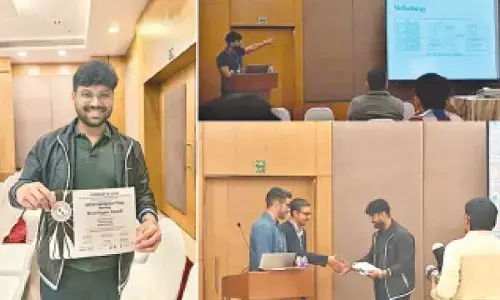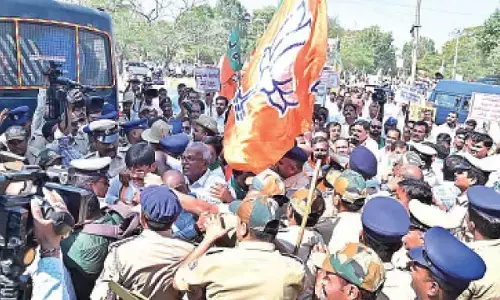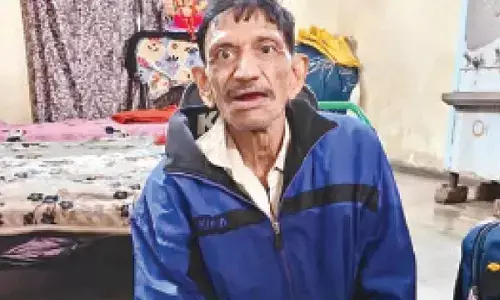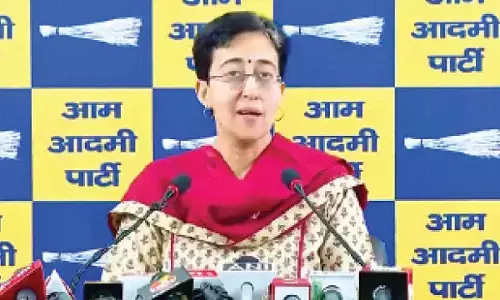Judges selection: India and world
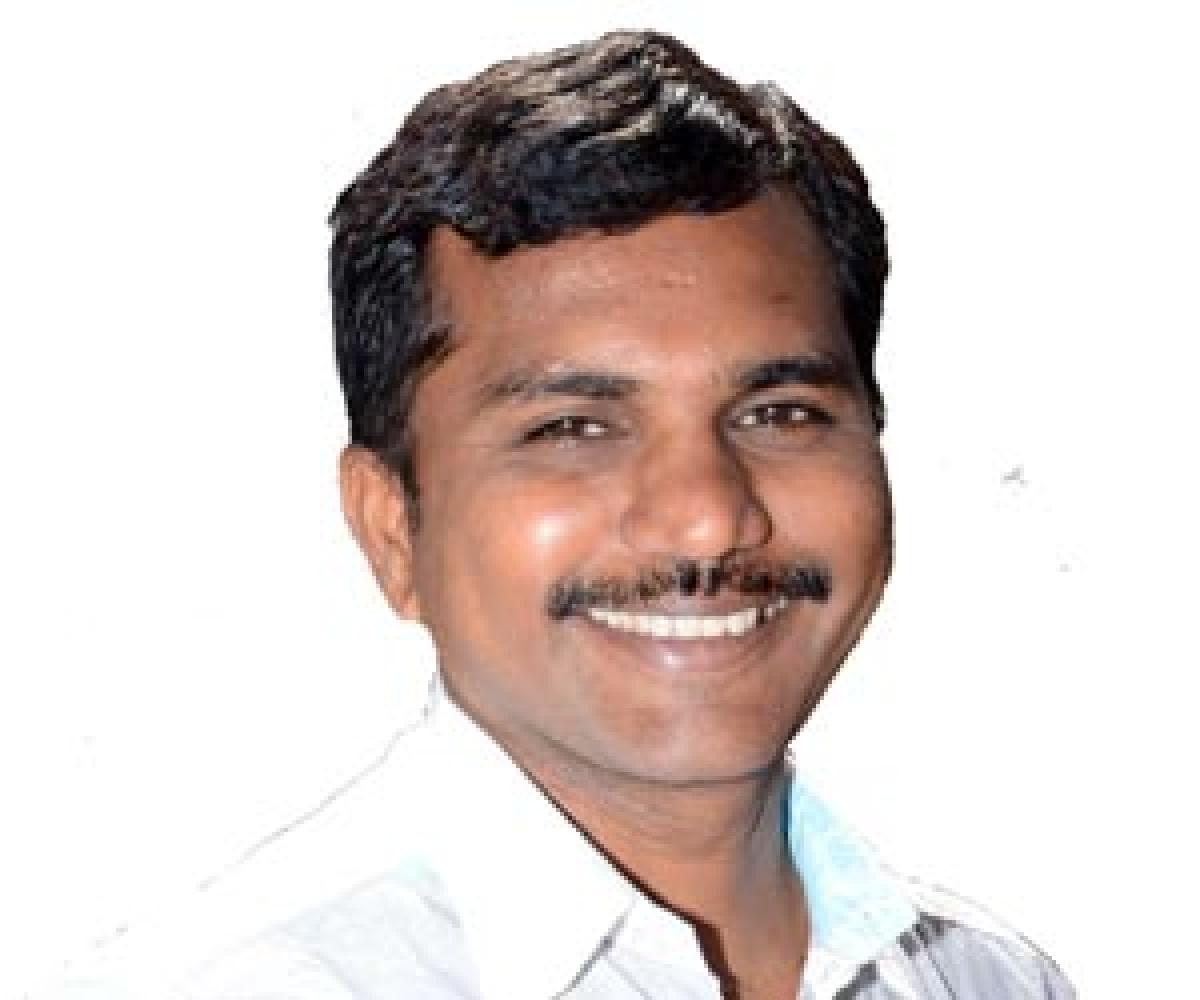
Since the year 1993 we the people of India are following the “ Collegium System” for the appointment of Judges to the Constitutional courts ( supreme court and High courts).
Since the year 1993 we the people of India are following the “ Collegium System” for the appointment of Judges to the Constitutional courts ( supreme court and High courts). “collegium” consist the Hon’ble chief justice of Supreme Court as chairmen and four other senior most Judges as its members. Executive which represents the citizens directly has no role to play in the selection process. If we look at the procedure adopted by other countries, in United State of America which is well known as super power, there are two types of courts, Federal and State courts. The Judges of Federal courts are appointed by the President of USA with the advice and Consent of Senate.
Judges of Federal court hold the office during Good behavior. Appointment of the judges of State courts is followed by election. President nominates judges, the names of potential nominees are often recommended by senators or sometimes by members of the House who are of the presidents of political party. The senate judicial committee typically conducts confirmation hearing for each nominee. The American Bar Association’s standing committee also provides an evaluation of the professional qualification of a judicial nominee the Senate Committee on the judiciary.
In UK, which is known as mother of democracy the Judicial Appointments Commission (JAC) an Independent Commission looks after the process of selection of candidates for judicial office in courts and Tribunals. The JAC consists total 15 members; out of those 3 members will be from Judges Community, and remaining 12 members (including Chairmen) are appointed through open competition. Besides JAC there is another authority known as “Judicial Appointments Conduct and ombudsman” to look in to the Complaints regarding appointments by JAC and Judicial discipline or Conduct.
In Germany which gained experience from the ruling of dictators, the Appointments and Decision on promotion of Judges are made by the executive; however there is some involvement of judiciary through participation in judicial electoral committees and advisory bodies. The Judiciary in Germany shared between Federation (Bund) and 16 Lander (States and Provinces). German Federation consists Federal Constitutional court and 5 Federal courts. Federal Constitutional court consists total 16 Judges. Half of those judges are elected by the Upper Chamber of parliament and half by the Lower Chamber of the parliament. In the Upper chamber the Federal Minister of Justice Draws up two (2) Lists of eligible candidates, one consists of judges from the Highest Federal courts and 2nd list consists of persons suggested by parties in the Federal parliament or the various Lander Governments.
Lower Chamber elects the Judges through parliamentary committee of 12 members consisting members of Parties in the chamber and makes decision with majority of 2/3rd vote. The process of selection of 5 Federal court judges will be under the control of “Federal Electoral Committee” which consists total 32 members. Out of them 16 are Ministers of Justice of 16 Landers and remaining 16 are members of Federal Parliament. The Federal Minister for Justice will be the nonvoting chairmen of this Committee.
In this process the judiciary can give advisory opinion on the personality and aptitude of the candidates. Similarly in 16 Landers (States) the process of selection of Judges will be taken up by “Judicial Electoral Committees” of each Lander. Normally these committees consists members from 11 to 16. The members are chosen from judges (3 to 6), Members from legislation (6 to 8), Lawyers (1 to 2), judges of jurisdiction concerned ( 1 to 3) and the Minister for Justice of the state will be the nonvoting Chairmen ofeach committee.
In South Africa which is following the footsteps of great persons like Mahatma Gandhi and Nelson Mandela, the president nominate the judges after consulting the “Judicial Services Commission” consisting of 23 members. The Judicial Services Commission consists Judges, Advocates, Legal Professors, members of Parliament and eminent persons nominated by the president as its members. The members of the committees will continue during the pleasure of the parliament.
In most of Latin American countries like Argentina and Brazil the President of the Nation normally nominates the judges subject to the approval of the Senates concerned.
In Italy which is one of the ancient imperial states, the Federal Constitutional Court is their highest court, which consists total 15 members. Out of the 15 judges, 1/3rd will be appointed by the President of the country, 1/3rd by the parliament in joint session and 1/3rd by highest instance ordinary and administrative courts.
In china there are 4 types of courts. Peoples courts, Special people’s courts, Military courts and Local people’s courts. Supreme People’s court is the highest court of the Nation, and the judges of the supreme people’s court are appointed by the NPC (National people’s congress). The judges of other courts are appointed by the “Judicial Commission” constituted by the Government. The “Standing Committee” constituted by the People’s Congress (Highest legislative body of the country) will monitor the conduct, promotions and removals of the judges.
In France normally the Government prepares panel of judges and refers to “High council of the Judiciary “for approval. The High council of Judiciary is made up of other judges from the receiving court. These judges serve for life. Besides this there is another special council known as “Constitutional Council” which is popularly known as guardian of constitution, with the powers of review over the enactments of parliament.
In Russia there are two types of courts, Federal courts and Courts of the Objects of the Russian Federation. Federal Courts includes “Constitutional Court of Russian Federation”. Supreme Court of Russian Federation and Supreme Court of the Subjects of Russian Federation are other apex courts. Decision of Selection, appointment, promotion, and Discipline of judges are to be under the control of “Bodies of the judicial Committee”. Council of judges of the Russian Federation, an elected body looking in to the matter. Presently in Russia also a collegiums is looking after the appointments of judges. Collegium of judges entirely elected by the bodies of the judicial community from among their representatives.
If we look in to the procedure adopted in India for the appointments of judges to the Constitutional courts, till the year 1993 the president of India use to appoint the judges after consulting the chief justice of Supreme Court and two other senior most judges. Presently the collegium headed by the CJ of Supreme court is looking after the procedure of appointments of Judges though the nominal appointing authority is the president of India. Strictly speaking collegiums is the result of differences between the executive and judiciary. Collegiums system, which appoints judges to the nation's constitutional courts, has its genesis in, and continued basis resting on, three of its own judgments which are collectively known as the Three Judges Cases.
If we look in to the differences between the Executive and Judiciary, we can say the seed was sown early in the year 1981. The then Central Law minister wrote a letter to the Governor of Punjab state and Chief ministers of all the States requiring them to see 1/3rd of the High court judges of their concerned state should hail from outside of the state and so also requested them to collect the consent letters from the additional judges for their transfer to other states. The letter ignited the fire between the executive and the judiciary in India.
The Constitutional bench comprising of 7 judges (Popularly known as First Judges case: S.P. Gupta vs Union of India) opined that the active involvement of Executive in to the affairs of judiciary is Unconstitutional. Whilst disposing the said writ the constitutional bench discussed elaborately upon Article 222 of Indian constitution. The Bench opined that the judiciary stands between the citizen and the State as a bulwark against executive excesses and misuse or abuse of power by the executive and therefore it is absolutely essential that the judiciary must be free from executive pressure or influence and this has been secured by the Constitution makers by making elaborate provisions in the Constitution.
The constitutional bench has placed several examples extracted from the constitution to show that the makers of Indian Constitution intended to establish an independent Judiciary. The Hon’ble bench quoted that the judges of Supreme Court and High courts hold the office till their retirement but not at the pleasure of President of India, except in case of impeachment by parliament. The judges get their salaries and other allowance from specially established consolidated fund but not from the executive directly, except in case of impeachment proceedings the Parliament or assemblies of different states are not permitted to discuss upon the proceedings of the constitutional court, and the courts can punish persons under the head ‘contempt of court order’ if any one disobey their orders. The bench further observed that there is an obligation upon the judiciary to protect its own independence. The judgment in this case gives rise to an idea of having collegium.
But the collegium was actually prepared only after the judgment delivered by larger bench comprising of 9 judges popularly known as second judge’s case (Supreme Court advocates on record vs Union of India). The 9 judges bench headed by Justice Varma delivered its judgment with 7:2 majority as a result “collegiums” system was come in to existence from the year 1993.subsequently in the year 1998 the then President of India Sri. K. R. Narayanan, by using his powers under Article 143 referred questions to the Supreme Court seeking answer with regard to constitutionality of establishment of collegium system and related subject matter, the constitutional bench comprising of 9 judges ( popularly known as third judges case: In re special reference 1 of 1998) confirmed the previous judgment and constitutionality of ‘ Collegium’ system. Since then till the date the collegium of Supreme Court is recommending panel of judges to the president of India for their appointment.
Several occasions our judges use to quote the judgments of western countries while rendering judgments, being pioneers with long democratic traditions guided by the “rule of Law”. In those countries unlike in India we can witness the role of executive in the process of selection of Judges. It is pertinent to say in India the executive become a spectator in the process of selection of judges. Unlike in the entire world the panel of judges in India is electing their bench colleagues.
“Justice not only be done, but it appears to be done” is one of the prominent principle in law. Unfortunately the system of present collegium is not sitting within the four corners of the above principle. Whether it is the process of selection of eminent authority or an ordinary labour, the principles of natural justice are to be followed. The strange process adopted by the judiciary sending negative signs to the people of India.
The parliament of India felt that the collegium system lacking accountability and transparency, as such through the 99th amendment to Indian constitution brought NJAC (National judicial appointments commission) in the year August, 2014. The NJAC consists total 6 members, the Chief Justice of India will be its Chairmen, two other senior most judges of Supreme court are also appointed as its members, the Central Law minister acts as ex officio member and Two eminent persons hail from India (selected by a committee consisting CJ of Supreme court, Prime minister of India and Opposition leader in Loksabha) will be other members. On plane reading of the above it appears to be a better alternative, but surprisingly the Hon’ble Supreme court comprising of 5 judges ruled out the NJAC Act as UN constitutional in the month of October, 2015, which ignited the fire between the Executive and Judiciary.
Executive asserts that the judiciary had no jurisdiction to assume to itself, the role of appointment of Judges to the higher judiciary. It was pointed out, that it is the Parliament alone, which represents the citizenry and the people of this country, and has the exclusive jurisdiction to legislate on matters. Mr. Justice M.N. Venkatachaliah, who headed the National Commission to review the working of the Constitution, had also recommended a five-Member National Judicial Commission, whereby, a wide consultative process was sought to be introduced, in the selection and appointment of Judges. It was pointed out by the executive, that the scheme of the Constitution envisaged a system of checks and balances. Like in the case of Executive, in the matter of appointment of Judges, Articles124 and 217 provided for executive control, under the scheme of checks and balances. Justice V.R Krishna Ayer while writing forwards to “Story of a Chief Justice” expressed the collegium failed to select best judge’s available, similar view expressed by Justice Rumal Paul, Justice S.S. Lodhi and Sir Nareeman. Justice Varma who headed the bench of 9 judges which propounded the popularly know II judges Case also changed his view and expressed that it is time to review upon the Collegium System.
The obstacle between the two important wings of the state i.e Executive and Judiciary is growing day by day like chasm. Declared 450 vacancies in Supreme Court and various High courts are reflecting the seriousness of the differences between the executive and judiciary. These days we witnessed the wet eyes of Chief justice and returned panel, prepared by the collegium by the president, which is evident that the distance between the judiciary and Executive is increasing day by day.
Every where in the world the executive has a role in the process of selection of judges, why not in India? When there is possibility of transparency and accountability through the system of “National Judicial Appointments Commission” what is wrong in accepting it? It is the right time that both the executive and judiciary have to come down in the interest of Democracy, in the interest of nation and extend their coordination with each for better tomorrow.
By C Raman Kumar Reddy
The author is advocate based out of Karimnagar








